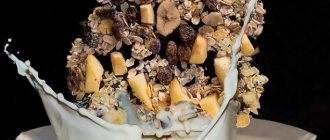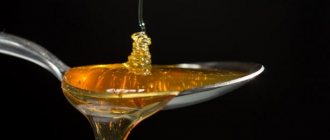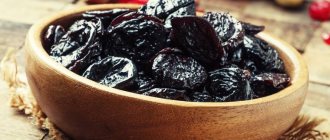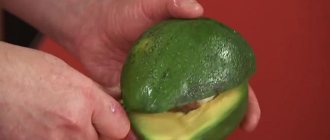4253
Olives are the healthy fruits of the evergreen olive tree. This is a real long-liver, famous for its endurance. An olive tree lives up to two thousand years, which is many times longer than a human life. The fruits are collected not only in Greece and Italy. In the store you can find finished products from Africa, Crimea, the Caucasus, Spain and Israel.
They all taste similar, differing only in color. Olives are always green, black olives. Both the first and second can be used as snacks. They can be added to salads and main courses, but are rarely used as an independent dish. Is it possible to eat olives while losing weight, because they are good for health?
Composition and properties of fruits
The calorie content of 100 g of product is 145 units. The product is useful because it contains proteins, fats, carbohydrates, folic acid, vitamins A, B1, B2, B4, B5, B6, PP. Micro- and macroelements are also present: sodium, potassium, calcium, copper, magnesium, phosphorus, iron, selenium and zinc.
Not only the olives themselves, but also the oil from them are a dietary product. By consuming them every day, you can reduce weight in a short time. The difference between this oil and others is that carcinogens do not appear when heated.
How to use olives for weight loss?
Olives on a diet can be used as an independent snack or as an addition to salads and any savory dishes.
Even when heated, the dietary product does not emit dangerous carcinogenic substances. This is also true for butter. Not all oils can boast of this. It is known that sunflower oil can be used as a salad dressing, but when heated it will release dangerous carcinogens.
In order for olives to be as effective as possible on a diet, it is recommended to consume the product in its pure form. It is better to do this on an empty stomach - after the first mug of clean water you drink. To reduce your weight by a couple of kilos in a week, you need to eat 10 olives in the morning. It is this product that makes it possible to normalize metabolic processes and start metabolism.
Be sure to read: Fighting such a problem as fatty pubis
Nutritionists say that eating olives or black olives in this way is safe for health. There is even a special dietary program based on the consumption of olives.
Benefits and harms of losing weight
Olives are included in the diet because they reduce body mass index. They contain polyunsaturated fatty acids. Black fruits are rich in flavonoids, and green ones are rich in chlorophyll. But in order for the product to be beneficial and not add extra weight, you should choose it correctly. Canned olives from the store are not suitable in this case.
A side effect may be a lack of weight loss. This occurs due to an excess of consumed calories during the day. To avoid this problem, you should adhere to the consumption norm: eat no more than 15–20 olives per day. Accordingly, the rest of the diet should be adjusted to the intake of this food.
This diet is not suitable for people with kidney and liver problems. It should also be taken into account that this product is not compatible with dairy foods. In addition, to avoid allergies or skin rashes, you should check your body’s sensitivity to the product.
Eating olives lowers blood pressure, because excess cholesterol is removed from the body and the walls of blood vessels are strengthened. In addition, the brain is saturated with oxygen.
Olive leaf green tea is beneficial for many reasons:
- helps in the fight against vascular diseases,
- heals wounds,
- reduces the amount of cholesterol in the blood,
- strengthens the immune system,
- helps fight fatigue
- used to treat colds and fungus.
The infusion has a specific taste, so it is used only for medicinal purposes.
Possible complications
Nutritionists say that olives have no side effects or contraindications. The most negative point is that due to exceeding the amount of product, a person will not lose weight. This is especially true for canned and pickled ones.
However, the product contains a fairly large amount of fat, so those who have liver problems should not overeat. Also, people suffering from colitis, kidney problems, stomach and duodenal ulcers will have to abstain from olives when losing weight. And because of the vinegar in canned ones, those with allergies should not eat them.
Fresh olives are not mixed with dairy products to avoid causing stomach upset. That’s why they put marinated ones in salads with cheeses.
How to choose olives
During the season, olives should be purchased at the market by weight. They are not cheap, but justify their price thanks to many useful properties. You can eat about 80 g of this product per day. Olives are added to salads with any sour dressing, which allows the beneficial substances to be quickly absorbed by the body and satisfy the feeling of hunger.
When choosing, you should pay attention to the appearance: the fruits should be elastic to the touch, green in color, without white dots on the surface. Pickled and canned olives are inferior in their benefits to fresh ones.
There are several features when purchasing this product:
- In a glass jar, the brine should be transparent and the color of the fruit should be uniform.
- You should not buy a product if the producers are, for example, Russia or Türkiye. Olives are brought from Mediterranean countries.
- You should buy unstuffed olives. Fruits with seeds have more benefits.
- When choosing a jar, preference should be given to a glass one, since an oxidation process is possible in an iron one.
- Shelf life - no more than six months. If a longer period is indicated on the packaging, the preservation did not take place in a natural way.
- Too low a price should warn against purchasing.
If the color is darker, then this is an indicator of late harvest. When choosing oil, you need to take only unrefined oil, because it retains all the beneficial substances. In addition, you need to look at the date of manufacture.
After eating olives, you should not eat or drink for 40 minutes, otherwise you will not be able to achieve a positive effect.
Nutritional value, composition and calorie content of olives
Olives are low in calories and make a great addition to a variety of dishes, such as salads, pasta and pizza. Although there are many varieties of olives, most have similar nutritional profiles.
100 grams of ripe canned olives contain (% of recommended daily intake) (1):
- Calorie content: 115 kcal (6%).
- Carbohydrates: 6.3 g (2%).
- Fat: 10.7 g (16%).
- Protein: 0.8 g (2%).
- Fiber: 3.2 g (13%).
- Vitamin A: 403 IU (8%).
- Vitamin E: 1.7 mg (8%).
- Calcium: 88 mg (9%).
- Iron: 3.3 mg (18%).
- Sodium: 872 mg (36%).
- Copper: 0.3 mg (13%).
- Omega-3 fatty acids: 64 mg.
- Omega-6 fatty acids: 847 mg.
Olives also contain trace amounts of vitamins, minerals and nutrients such as vitamin C, vitamin K, magnesium, phosphorus, potassium, zinc, manganese and selenium.
Principles of use for weight loss
For those people who decide to regain their slimness, you can start taking 1 tsp on an empty stomach. olive oil. If the body does not respond with unpleasant symptoms, the procedure is repeated in the evening, before bed. Gradually the norm increases to 1 tbsp. l.
Patients with gastritis should drink a glass of warm water along with the oil. To cleanse the digestive tract, intestines and liver, add 200 ml of tomato juice to the drink.
In addition, the oil is used as a salad dressing, but it should be remembered that the daily intake should not exceed 2 tbsp. l.
To increase the beneficial effect, the product can be combined with lemon juice. A mixture is made of 1 citrus fruit and 50 ml of oil. On the day of taking this composition, the menu should contain only raw vegetables and fruits. At the same time, you should drink a lot of water. The mixture should not be consumed on an empty stomach. It is better to swallow it before bed, mixing the ingredients and without drinking anything.
Thanks to olive oil, the level of bad cholesterol in the body is reduced. In addition to this, the oil helps to increase the amount of substances that destroy fats.
Healing properties
When deciding whether it is possible to eat olives on a diet, it is enough to study the composition of the product to understand that it is indispensable for losing weight and allows you to put your body in order:
- Unsaturated fatty acids, unlike animal fats, prevent the development of heart and vascular diseases and atherosclerosis.
- Oleic acid is a strong antioxidant that prevents the formation of breast cancer.
- Pectins remove heavy metal salts and toxins, which is especially important for residents of megacities.
- B vitamins stimulate the nervous system, improving mood and giving an energy boost.
- Calcium strengthens bone tissue, helps fight arthrosis, osteochondrosis and arthritis.
- The combination of vitamins E and C reduces oxidative processes, prevents the development of cancer, has a powerful antioxidant and anti-inflammatory effect, and reduces swelling.
- Manganese is responsible for muscle tone.
- Essential oils nourish the skin, smooth out wrinkles, and remove age spots.
- Glutathione strengthens the immune system and improves the quality of lymphocytes.
Decoctions and infusions of the leaves lower blood pressure, regulate intestinal activity and heart rate, and are used in cosmetology.
The combination of antioxidants and healthy fats makes olives an indispensable component of weight loss diets.
Olive diet
The duration of the diet should not exceed 5 days. Long-term use of such a product will harm the body, because olives do not contain all the nutrients necessary for humans. After the specified time has passed, you need to switch to a balanced diet.
Approximate diet on weight loss days:
- Breakfast and dinner consists of 40 g of olives, the same amount of arugula, a couple of cucumbers, 1 tomato, 1 cashew and 1 pepper. Dress the salad with olive oil and balsamic vinegar. You don't need to add salt. Additionally, you can eat about 50 g of nuts before lunch: hazelnuts, almonds, cashews, walnuts.
- Lunch includes the following dishes: buckwheat, rice, oats, barley. The cereal is boiled in water. You can add 150 g of boiled fish to it. For drinks, you can consume 200 ml of milk, low-fat yogurt or kefir. Oil is not allowed except olive oil.
- The afternoon snack consists of chopped olives and black olives. The latter are higher in calories, so it is better to give preference to green fruits.
- Between meals you need to drink non-carbonated mineral water in sufficient quantities.
The result of such a diet will be not only the loss of kilograms, but also tightened skin. This will happen due to the fatty acids contained in olives, which accelerate metabolic reactions and contribute to the formation of skin lipids.
This diet is suitable for both healthy people and those suffering from excess cholesterol. Everyone else should consult a specialist before using such food.
There is a second diet option: on an empty stomach, eat 10 olives and 1 tbsp. l. olive oil. For breakfast and lunch, it is recommended to prepare vegetable salads with the addition of this oil. For afternoon snacks and dinner you should eat only olives. Drink only still water during the day. The duration of such a diet is 3-5 days.
Olives and black olives in the fight against excess weight
Olives for weight loss are often included in the nutrition program. This is explained by the value of the product for the human body. You can use both olives and black olives, but only if there are no personal contraindications. These include not only food allergies, but also problems with the kidneys, gastrointestinal tract, and other chronic diseases. That is why it is up to the attending physician to decide whether olives can be eaten on a diet.
Olives are a valuable product that contains oils, vitamins, and minerals necessary for the body. They are also used to treat many diseases, including the digestive tract, but only after obtaining the appropriate permission from a doctor. The product contains polyunsaturated fatty acids, which are used for rapid fat burning. They eliminate the deposition of cholesterol, which is dangerous for the body.
Olives for weight loss can be included in various nutrition programs for several reasons. Among the main ones is saturating the body with valuable substances. It is known that even an olive pit is completely digested by the body. The product contains a lot of useful substances, including:
- Fiber is what nourishes the intestines and helps remove waste, toxins, and dangerous substances from the body. It also cleanses the body, eliminates stagnation, and stimulates intestinal motility. This fact alone makes it possible to include olives in a weight loss program.
- Calcium and magnesium – olives are rich in these components, and therefore they can be used to support the heart and blood vessels, and improve the health of these organs. Additionally, the product is used to remove excess fluid from the body, which also has a beneficial effect on excess weight.
- Polyphenols are beneficial for the body, capable of protecting cells from premature destruction and from free radicals. These are natural antioxidants, the level of which should be increased.
- Oils help reduce the level of bad cholesterol in the blood and prevent bad cholesterol from settling on the walls of blood vessels.
- Oleic acid – forms proper metabolism. Stimulating metabolism is an important part of the weight loss process.
Be sure to read: How to lose weight after a cesarean section without harm to your health?
Olives for weight loss are a product that is used quite often. But the main thing in the matter of weight loss is not to overdo it and prevent excessive consumption. This applies to any product. Olives can be an excellent aperitif before main courses, as well as a delicious snack. They can also be used as an additive to many salads, main and first courses.
Contraindications
The product has contraindications:
- Olives should not be eaten by people suffering from cholecystitis, as they have a choleretic effect.
- It has diuretic properties.
- They are quite high in calories, so you should not consume them in large quantities.
- Canned foods contain a lot of salt. For this reason, they are contraindicated for people with kidney disease.
- They often cause allergies and rashes on the body.
Eating pickled olives will not bring any benefits, since chemicals are involved in their production process.
What diet and why should you follow for chronic renal failure (CRF)?
For patients with chronic renal failure, nutrition is no longer just a normal physiological process, but a very important, sometimes even the main, component of treatment. The basic principle of a diet for kidney failure that is not treated by dialysis is low protein and high calorie content. It must be emphasized that a low-protein diet for renal failure acts in two ways. Firstly, reducing the protein load inhibits one of the main mechanisms of chronic renal failure progression - the so-called hyperfiltration, when the still intact, non-sclerotic part of the renal tissue is forced to take on an increased load. Hyperfiltration, which itself leads to the development of sclerosis (regardless of the underlying disease), is aggravated by a high dietary protein load. From here, the mechanism of action of a low-protein diet becomes clear - less hyperfiltration, less “cushioning” of the kidney tissue. There is a second mechanism: protein is a nitrogen-containing substance; during its transformations in the body (scientifically called metabolism), the final product is formed - urea. It is excreted from the body by the kidneys, and accordingly its content in the blood in chronic renal failure is significantly higher than normal. By limiting protein intake with food, the level of urea in the blood decreases, and almost in parallel with this, the level of intoxication (that is, poisoning of the body with decay products) also decreases. Thus, long-term adherence to a low-protein diet leads, on the one hand, to a delay in the prospects of dialysis treatment, and on the other hand, to a direct improvement in well-being in patients with chronic renal failure.
Why should a diet for chronic renal failure be high in calories?
The fact is that with a lack of calories, our metabolism changes - not only our own fats, but also proteins begin to “burn”, the level of urea, therefore, not only does not decrease, but, on the contrary, increases, and the meaning of a low-protein diet is nullified. Therefore, a patient with chronic renal failure should receive at least 3500 kcal from food, and in the presence of physical activity, 4000-4500 kcal per day, while consuming no more than 25-30 g of protein. If, when limiting protein, it is not possible to gain sufficient calories (you can roughly estimate the result by weight dynamics - if the weight decreases, it means there are not enough calories), it is better to expand the diet with protein, but just do not starve!
For those who intend to take our recommendations seriously, there are special tables and calculators. You need to eat at least 5 times a day, in small portions. If nausea and lack of appetite lead to refusal of food, a vicious circle is formed: the less the patient eats, the higher his urea level, the greater the intoxication, the worse the appetite, the less he eats... The circle is closed, and in such cases, break it This is possible only with the help of drip infusions and other special treatment methods.
What other nutrition-related dangers exist in chronic renal failure?
They really exist and are associated with the fact that as chronic renal failure progresses, the level of potassium in the blood of patients increases. A rather complex mechanism operating in the renal tubules is responsible for this: potassium from the blood is no longer excreted in the required amount by the kidneys, and accordingly accumulates in the blood. This can cause serious, sometimes life-threatening problems with the heart. Therefore, every patient with chronic renal failure, if his blood potassium is elevated, must follow a diet with a sharp restriction of potassium in food. The normal level of potassium is 3.5-5.5 mmol/l, it is determined by a blood test “from a vein”.
The highest potassium content is in dried fruits, followed by potatoes, sorrel, bananas, then other fruits and vegetables, sea fish, and meat. But there is no or very little potassium in sugar, marshmallows and marmalade, butter, dairy products, and cereals. In practice, patients with a tendency to increase potassium should simply exclude dried fruits, bananas, sorrel, potatoes, fruit juices from consumption, limit other fruits and vegetables to 200 g per day, and you already limit meat and fish, unless of course you follow a low-protein diet . You can gain calories without potatoes through sour cream, butter, marmalade, marshmallows and cereal products.
Is it necessary to limit salt?
There is no need to salt food, and not only with chronic renal failure, but also with arterial hypertension of any origin. There is nothing wrong with this restriction, because sodium, which is part of salt, is found in almost all food products, and even when eating unsalted foods, you still get the amount of sodium per day that your body needs. Particularly salty foods include cheese, sausages, as well as canned meat, fish and vegetables - all of them are heavily salted during the manufacturing process and should not be eaten.
Do I need to add anything to my food?
The kidney is an organ that regulates the balance of sodium, potassium, calcium, phosphorus, magnesium, and hydrogen ions in the body. Maintaining their normal levels in the blood and tissues is vital. And here's why: for the cells of our body to function normally, they need to maintain a constant chemical composition of their internal environment. This is a kind of solution, which, according to one of the most common theories, is similar in chemical properties to the environment in which life originated on Earth. That is, in essence, our cells store within themselves a tiny drop of ancient biochemical material with established parameters. And if the usual parameters of the content of vital substances, formed over millennia, change, the cells stop doing their work or even die. The functions of the brain, the activity of the heart, skeletal muscles, etc. are impaired. To prevent this from happening, so that the level of substances dissolved in the blood delivered to the cells is stable, and the cells can maintain their internal environment, despite changing external conditions, the composition of the blood is constantly regulated, including by the kidneys. If kidney function is impaired due to illness, then the chemical constancy of the internal environment—homeostasis—is disrupted. This doesn't just apply to sodium and potassium, which we've already talked about. Now let's move on to the exchange of calcium, phosphorus and hydrogen ions. Calcium and closely related phosphorus are the most important substances on which the condition of our skeletal system, heart and other muscles, central nervous system and blood coagulation system depends. In chronic renal failure, the excretion of phosphorus in the urine is impaired; accordingly, its level in the blood increases, and it is for this reason, for the second time, that the calcium content in the blood decreases. A high level of phosphorus in the blood causes itchy skin and has a negative effect on the cardiovascular system. Lack of calcium in the blood leads to disruption of the muscular and circulatory system, resulting in weakness, cramps, and bleeding. If there is not enough calcium in the blood, it begins to be washed out of the bones, the bones become brittle, break easily, do not heal well, and pain appears. In addition, with chronic renal failure, the metabolism of vitamin D in the kidneys is also disrupted, and as a result, its deficiency develops and a condition resembling rickets in young children occurs. Therefore, you need to take care of sufficient calcium intake in the body. The greatest amount of calcium is found in dairy products, cereals, eggs, dried fruits and some vegetables. In this case, it is necessary to limit the intake of phosphorus from food. The richest foods in phosphorus are milk, cottage cheese, egg yolk, beef, wheat bread, cereals, dried fruits, and walnuts. If you are already following a low-protein diet with low potassium content, then you, of course, limit your intake of cottage cheese, eggs, meat, bread, nuts and do not eat dried fruits, which means you “automatically” follow a low-phosphate diet. Therefore, you can eat as much cereal as you like. However, one cannot help but notice that in those products with a lot of calcium, there is a lot of phosphorus, or protein, or potassium, or all at once. What way out of this situation can be proposed? Very simple - calcium must be taken in the form of powders or tablets. Calcium carbonate is most suitable for our purposes. Not only is it absorbed better than other calcium-containing substances, but it also has the ability to bind phosphorus in the intestines and limit its entry into the blood. The daily dose of calcium carbonate is calculated by a nephrologist, and it can be purchased at the pharmacy in the form of powder or soluble effervescent tablets. In some cases, for better absorption, vitamin D supplements are added to calcium supplements. Of course, all this must be done with the knowledge of a doctor, and under the supervision of blood tests for calcium, phosphorus and parathyroid hormone - tests should be taken at least once a quarter. In addition, it should be borne in mind that for some diseases, such as urolithiasis, for example, these recommendations are not suitable and the diet must be specifically discussed with a specialist.
Another important process is maintaining the acid-base balance. It is characterized by such an indicator as “pH”, which reflects the content of hydrogen ions, and, accordingly, the acidity of the medium or solution. Normally, our blood has a slightly alkaline reaction; a pH level of 7.35 is normal for it. If the blood pH is less than 7.35, then it contains an excess of acids; if it is more than 7.35, then it contains an excess of alkalis. In chronic renal failure, as well as in some other conditions, the kidneys lose the ability to excrete hydrogen ions in the urine. This means that excess acid is not removed from the body, the blood becomes too acidic, and its pH drops to 7.2 or lower. The lungs try to compensate for these changes by retaining in the body the alkaline carbon dioxide that we exhale. To do this, breathing slows down, and various secondary metabolic disorders begin.
But this can also be partly combated with the help of diet if you consume alkaline foods. The simplest and most famous, classic, so to speak, dietary product is alkaline mineral water, for example Borjomi. However, there is a danger: mineral water contains alkali in the form of sodium bicarbonate (bicarbonate). And sodium increases blood pressure, especially in chronic renal failure. Therefore, the amount of mineral water or the dose of baking soda (that is, sodium bicarbonate) must be selected individually under the supervision of a doctor, who can add sodium removal drugs to the treatment. Unless your doctor prescribes otherwise, you should drink 1-2 glasses of Borjomi or 1-2 teaspoons of baking soda in a glass of water per day with mandatory blood pressure monitoring.
A properly selected diet with the right amount of supplements can improve your well-being and delay, or even prevent, the development of some very unpleasant complications of chronic renal failure, which is why a lot of attention is paid to it.
When creating your menu, you need to learn how to use tables or calculators to help determine the composition of various products and be sure to discuss your diet with a nephrologist. You can contact NES departments for advice.
Delicious recipes
Olives are a sought after food. They are used in preparing snacks. To do this, combine it with garlic, herbs, olive oil and chopped nuts. Or you can mix it with pepper, honey, vinegar, olive oil and leave for a while.
You can prepare a salad . For this you will need:
- tomatoes - 2 pcs.,
- cucumbers - 2 pcs.,
- sweet pepper - 1 pc.,
- onion - 1 pc.,
- oregano - 1 tsp,
- cheese - 100 g.,
- olives - 150 g.,
- olive oil - 2 tbsp. l.
The benefit of this salad is that all ingredients are taken fresh, without heat treatment. Just chop the ingredients and add butter. You can mix the ingredients or make a layered salad. The first layer is cucumbers, salt and oil. Then come peppers, onions, tomatoes, olives and cheese. Top the salad with a mixture of oil and oregano.
Appetizer of celery with olives . For preparation you will need:
- 1 stalk of celery,
- 1 tbsp. l. low-fat cream cheese,
- 5 pieces. stuffed olives.
A layer of cheese is applied to a celery stalk cut lengthwise. Sliced olives are placed on top.
This product can be marinated. Ingredients:
- olives - 1 glass,
- olive oil - 2-3 tbsp. l.,
- celery - 1 pc.,
- garlic - 2 cloves,
- chili pepper - 1 pc.,
- chopped parsley - 3 tbsp. l.,
- wine vinegar - 1 tsp,
- dried oregano - 1/8 tsp.
Olives must be washed in water and dried. After this, add oil and stir. Add garlic, celery, a couple of tablespoons of parsley, vinegar and chili. Stir and leave for half an hour at room temperature. Then you need to put everything on a plate, sprinkling oregano and the remaining parsley on top.
Mediterranean tuna salad . Components:
- garlic - 1 clove,
- olive oil - ¼ cup,
- lemon juice squeezed from half the fruit,
- olives - 100 g,
- tuna in its own juice - 2 cans,
- onion - 1 pc.,
- parsley, pepper and salt - to taste.
The garlic should be finely chopped, combined with salt and crushed. Separately, mix lemon juice, oil, parsley, pepper, minced garlic with salt and mashed tuna with a fork. Add onions and olives. Season with a couple of tablespoons of tuna juice and stir until smooth.
How to eat olives on a diet
When dieting, you need to include foods in your diet that do not interfere with weight loss. In what form and quantity you can eat olives on a diet, you need to consult a nutritionist. An experienced specialist develops a diet individually for each patient.
There are diets designed for 5, 7 days, and even a month, consisting only of olives and olive oil. This is fundamentally wrong. Nutrition should be balanced; any “distortions” will lead to metabolic disorders, health problems and even more weight gain.
The calorie content of olives is 130-165 kcal per 100 g, so they will only bring benefits if consumed in moderation:
- Fresh fruits are the healthiest. They can be eaten up to 80-90 g per day separately or in vegetable salads, seasoned with lingonberry, cranberry or lemon juice. Such snacks will help the absorption of polyunsaturated fatty acids, and the coarse fiber of vegetables will create a satiating effect, preventing you from overeating.
- Vegetable salads can be seasoned with cold-pressed olive oil (no more than 1 tablespoon per day).
- Once a week, breakfast is good to replace with 14-15 fresh black olives.
- Canned olives are not an equivalent substitute for fresh fruit. They contain a lot of salt, which delays the excretion of water and increases blood pressure. It is better to eat 5-7 of them per day. After heat treatment, the vitamins in the drupes are destroyed, the remaining beneficial substances are preserved, but in smaller quantities than in fresh fruits.
The piquant taste of olives allows them to be used in a diet, making the menu varied and tasty. They are added to soups, served as a sauce for meat, and used to make a paste that is placed on bread instead of butter.
Reviews
Tatyana, 32 years old, Lipetsk: “I took a tablespoon of olive oil on an empty stomach, washed it down with a glass of still water with the addition of a teaspoon of honey and lemon juice. All ingredients are available. At the same time, the number of calories per day should not exceed 2000, otherwise weight gain will occur. Advantages of the diet: I managed to lose weight after giving birth. Disadvantages: I don’t want to take the oil in the morning.”
Lyubov, 40 years old, Astrakhan: “For a month I took the oil in the morning. On the first day, it was difficult to drink a full spoon of oil, especially not to eat for an hour after that. A week later, the portion was increased to 1.5 tbsp. l. I lost 4 kg in a month, and I didn’t stick to any diet, I just ate healthy foods and did exercises.”
The benefits of olives for the human body
Eating olives helps lower cholesterol and high blood pressure, reduces pain, treats and prevents cancer, improves heart health, reduces the risk of diabetes, and much more. Here are the benefits of olives for the human body:
Supply the body with antioxidants
Oxidation in the body has been shown to be associated with the progression and development of many diseases, such as cardiovascular disease and cancer. Olives are a highly antioxidant food that provides the body with polyphenols. Polyphenols are antioxidants that have proven antitumor, antidiabetic, antiaging, and neuroprotective properties (2, 3).
One study found that eating olive pulp significantly increased blood glutathione levels. Glutathione is one of the most powerful antioxidants in the body (4, 5).
Antioxidants like those found in olives benefit virtually every system in the body and may be a major factor in the prevention and treatment of disease.
2. Reduce cholesterol and high blood pressure
Because olives are a good source of healthy fats, they do not damage arteries like other fats do. Studies have proven the ability of olives to lower blood pressure and help control and reduce cholesterol levels. The hypotensive (lowering blood pressure) effect of olives is due to the oleic acid they contain (6).
Studies have shown significant reductions in blood pressure and overall cardiovascular inflammation after consuming olives, olive oil, and other foods included in the Mediterranean diet (7).
Ease pain
Inflammation causes disease, pain, and damage in the body. Nonsteroidal anti-inflammatory drugs are effective in controlling pain, but cause damage to a number of other body systems.
Olives are natural ibuprofen. Their consumption helps inhibit the growth of enzymes that create inflammation and thus provide pain relief (8). Inflammation also plays a big role in the development of cardiovascular disease, which is another reason why olives are very beneficial for heart health.
Treat and prevent cancer
The Mediterranean region has significantly lower cancer rates compared to northern European countries and other developed countries. Test-tube studies have found that olives may disrupt the life cycle of cancer cells. Phenolic compounds in olives have shown antitumor activity, especially against breast, colon, and stomach cancers (9, 10).
As with most dietary cancer treatments, the prospects are very promising, but more research is needed.
Promotes Heart Health
Olives contain everything you need for a healthy heart and cardiovascular system: antioxidants, healthy fats, and a high supply of copper and vitamin E, which are important for optimal heart health.
A diet that includes olives may not only treat symptoms of cardiovascular disease, but also significantly reduces the risk of developing cardiovascular complications, even in people with a genetic predisposition to high blood pressure and heart problems (11, 12). Regular consumption of olives may also help prevent coronary heart disease (13).
Works as a probiotic
A review of research published in the European Journal of Nutrition found that phenolic compounds in olives may increase the number of good bifidobacteria that produce vitamins and antibacterial chemicals in the body. Thus, olives improve gut health and microbiome function (14).
Reduce the risk of developing diabetes and obesity
Because olives are rich in monounsaturated fats, they significantly reduce the risk of developing type 2 diabetes and obesity when replacing foods containing other, more unhealthy fats. The antioxidants in olives also help inhibit damage from oxidative stress associated with diabetes, making this food an effective treatment for hyperglycemia and diabetic complications (15).
A review published in The American Journal of Clinical Nutrition examined the effect of olive oil consumption on the incidence of type 2 diabetes. The researchers studied 59,930 women aged 37-65 years and 85,157 women aged 26-45 who did not have diabetes, cardiovascular disease or cancer at the start of the study.
After 22 years of follow-up, the results showed that “a higher level of olive oil consumption is associated with a moderately lower risk of developing type 2 diabetes in women and that, hypothetically, replacing other types of fats (margarine, butter and mayonnaise) with olive oil is associated with a reduced risk of developing this disease" (16).
In a randomized, single-blind, placebo-controlled study, a group of 41 overweight or obese adults 65 years of age or older had their traditionally consumed fat replaced with olive oil. As a result of the study, these people experienced a decrease in blood pressure and an increase in good cholesterol levels. Improvements in heart health, metabolism, and immune function were found. This shows that eating olives has potential in treating obesity (17).
Help fight infections
Many studies show how effective olives are in fighting certain microbial, viral and fungal infections. Olive and olive leaf extract have been used for this purpose in folk medicine and have more recently been shown to be effective in scientific research. When tested, olive extract inhibited the growth of a number of viral, fungal, and bacterial infections, including methicillin-resistant Staphylococcus aureus (18).
Prevent osteoporosis
Osteoporosis is characterized by a decrease in bone mass and bone density. This condition may increase the risk of fractures. Rates of osteoporosis in Mediterranean countries are lower than in other European countries, which has led scientists to suggest that olives may be associated with better bone health (19, 20).
Some of the plant compounds found in olives and olive oil have been found in animal studies to help prevent bone loss (19, 21, 22, 23).
Human studies on this issue are lacking, but animal studies and data linking a Mediterranean diet to reduced fracture rates are promising (20).











